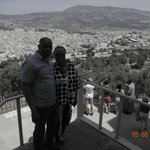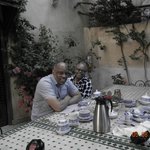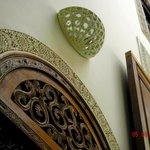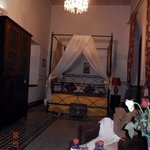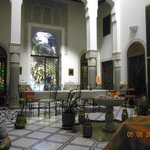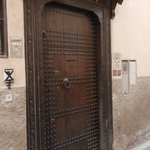Discovering Fes
The splash of public fountains, vibrant colors in the marketplace, the sound of the prayer call, the aroma of fresh spices in the narrow, winding streets of Fes: this is the stuff dreams are made of when you're planning a trip to Morocco. Luckily, Fes doesn't disappoint. It remains a travelers' favorite and a highlight of any trip through the country.
The oldest of the imperial cities in Morocco, Fes had very little colonial development when the French were in power from 1912 to 1956. You can see their architectural influence in the Ville Nouvelle area, which was beautifully designed by the French in the 1900s.
There's so much to explore in Morocco's most exciting and intoxicating city. The indisputable highlight is Fes el Bali (the Old Medina). If you only have time for one thing in Fes, make sure you spend it here. Read on for tips on how to structure your visit.
Crafting a Fes Itinerary

Assume you'll need at least two full days in Fes. Of course, the more time you have, the better.
Spend a full day in the Medina, a UNESCO World Heritage site. Walk through Bab Boujeloud, the massive gateway that welcomes you into Old Fes from the west. Start off your day at the local teahouse near the gate before you wander through dozens of shops and souks. Here, you can bargain and pick up beautiful hand-crafted leather goods to take home.
Leather is important in Fes. One of the most unique sights in the Old Medina is the tanneries. Families still use practices from hundreds of years ago to color their products, some involving pigeon droppings and limestone. On a hot day, you can see dozens of dyed fabrics drying on the roofs and hillsides.
Find your way to Qarawiyyin Library in the Karaouine Mosque complex, known as the oldest library in the world. It houses one of the oldest manuscripts ever written on gazelle leather. Admission is not open to the general public, but if you can find a local guide, they may be able to get you a peek inside. Even just a few seconds staring at the mind-bogglingly ornate tile and woodwork is well worth it.

Afterward, visit the Madrasa Bou Inania, an educational institution founded in 1351. The Marinid architecture found here is what travelers often envision when they imagine Morrocco. So be sure to bring your camera: there are dozens of memorable spots for a photo shoot.
On your second day, explore one of the most enchanting privately owned palaces in the city, Palais Mokrai. It's open to the public, so you can easily admire the detailed tile work and intricately carved stucco patterns common in Fes. Afterward, head to the Musée Batha, a 19th-century palace that houses Moroccan works of art, like carved wood and pottery. It's worth a visit just to explore the impeccably tiled courtyard.
If you have three or more days, you can truly experience the cultural capital of Morroco in all its beauty and mystery. Make your way to Fes el Jedid (new Fes). Located southwest of the old city, it's not exactly "new"—this area was built in the 13th century. You can take photos of the Royal Palace and its opulent gate, but you can't go inside. Take a walk through the old Jewish quarter for panoramic views of Fes from the cemetery. Other picture-worthy spots include the Merenid Tombs and Borj Sud.
Head to Ville Nouvelle for lunch and grab a Maakoudsa (potato cake) from the Marché Central for less than USD $1. After some street food, take a look at the dramatic change in the architecture and palm tree-lined streets different from other parts of Fes.
After a day or two of walking these streets, you may be in the mood for some pampering. Moulay Yakoub is a hot spring located in the suburbs of Fes, about 25 minutes from the Medina. Here, you can experience a real Moroccan bath with shared pools—and private rooms on request.
Touring Fes With A Guide

A local tour guide is highly recommended when visiting the Medina. It's fun to get lost by yourself, but having someone local to show you the tanneries with the best rooftop views, to point you to the best places to buy ceramics, and to suggest where to eat lunch is essential. These tours are helpful in teaching you the history and culture of the city, too.
Chat with a local specialist who can help organize your trip.
When To Go
The best time to visit Fes is during the shoulder season from April to May or September to October. It's not too hot, too cold, or too crowded in the city. Visiting during shoulder season also means you can find better flights and hotel options. It's worthwhile consulting this article about the best times to visit Morocco.
Getting There
Most American travelers enter Morocco through Casablanca, as there are no non-stop flights to Fes. If you have a long layover or want to spend a few days in Casablanca, check out this guide. or find out in this article about other destinations in Morocco.
There are also layovers at other European cities that fly directly to Fes. Once you arrive, meet your private transport at the airport—they'll be waiting with a clearly marked sign. Or, you can catch a taxi from the stand outside for a fixed price.
Where To Stay

Since you'll be spending most of your time in old Fes, staying in or near the Medina is the best choice. With a prime location in the center of the action, Dar Tahrya is an affordable, locally-owned riad (a Moroccan house-turned-hotel with an interior courtyard) with traditional decoration and rooms that sleep two to six people. The riad chef prepares an excellent Moroccan breakfast.
Not far away is a truly luxurious Morrocan compound complete with a spa, glamorous pools, and a fitness room. The rooms at Palais Sheherazade & Spa are impeccably appointed and full of traditional Moroccan charm.
If you'd rather avoid the morning chaos of the Medina, the Hotel Sahrai has unparalleled views of the city and a beautiful pool. The rooms are modern, with hints of Morrocan design throughout. This dreamy hotel also has a spa and two world-class restaurants to choose from.
Where To Eat

A daily retreat for locals and tourists alike, Café Clock is a classic dining experience in Fes. Located inside a 250-year-old restored courtyard house, it's a great place to try their signature camel burger or cheesecake.
Not far away is an elegant Fes institution called La Maison Bleue. Come here to try traditional Moroccan dishes: the recipes have been passed down through the El Abbadi family for hundreds of years.
Another good option is a restaurant and bread-making school rolled into one: The Ruined Garden is a peaceful place to eat couscous and tajine.
Fes Local Tips
Morocco is a Muslim country. As a respectful practice, dress modestly when you're out and about, especially near places of worship.
While shopping in the Medina, remember you can always bargain for a better price or walk away. Just don't go too low! You never know what the vendor's circumstances are—and how important his or her daily income may be.
The local craft center in the Batha neighborhood is one of the best places to connect with artisans and buy souvenirs at reasonable prices.
For more ideas on where to go and what to see in Morocco, take a look at this article on the country's top highlights.

